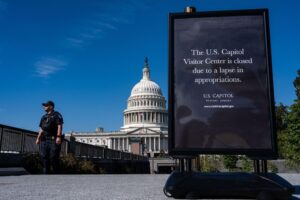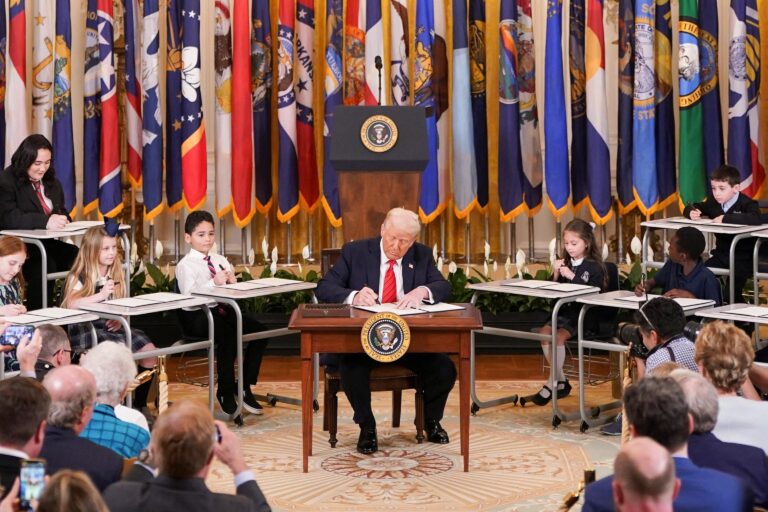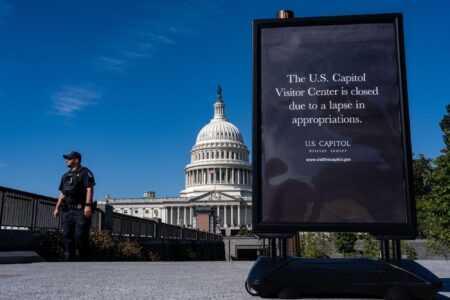Reimagining Federal Education: An In-Depth Look at Former President TrumpŌĆÖs Policy Agenda
TrumpŌĆÖs Ambitious Blueprint to Restructure the U.S. Department of Education
During his presidency, Donald Trump championed a transformative vision aimed at drastically curtailing the federal governmentŌĆÖs role in education. Central to this vision was a proposal to significantly downsize the U.S. Department of Education, shifting many responsibilities back to state and local authorities. This decentralization effort sought to reduce federal bureaucracy, cut administrative expenses, and eliminate what were described as burdensome federal mandates. By promoting school choice through expanded charter schools and voucher programs, the plan aimed to empower parents and foster competition among schools, thereby driving innovation and accountability at the community level.
Beyond reducing federal oversight, TrumpŌĆÖs education strategy prioritized aligning educational outcomes with workforce demands. Key initiatives included:
- Enhancing Career and Technical Education: Increasing funding and support for vocational programs to equip students with skills relevant to emerging industries such as renewable energy and advanced manufacturing.
- Overhauling Student Loan Systems: Proposing more adaptable repayment plans and stricter eligibility criteria to curb default rates and ease the financial burden on borrowers.
- Strengthening STEM Education: Investing in science, technology, engineering, and mathematics curricula to maintain AmericaŌĆÖs competitive edge in a rapidly evolving global economy.
| Initiative | Goal | Current Status |
|---|---|---|
| Downsizing the Department | Minimize federal influence in education | Under review |
| Expanding School Choice | Broaden parental options and foster competition | Outlined in policy proposals |
| Increasing STEM Funding | Prepare students for future job markets | Planned for implementation |
Evaluating the Consequences of Proposed Federal Education Budget Reductions
The Trump administrationŌĆÖs suggested budget cuts represent a significant contraction in federal support for critical education programs, particularly those designed to assist underserved and economically disadvantaged students. For instance, Title I funding, which provides essential resources to schools serving low-income families, was targeted for a reduction of approximately 20%, threatening to exacerbate educational inequities. Similarly, funding for special education under the Individuals with Disabilities Education Act (IDEA) faced proposed cuts near 15%, raising concerns about diminished services for students with disabilities.
Additionally, Pell Grants, a vital source of financial aid for millions of college students, were slated for a 10% decrease, potentially limiting access to higher education for low- and middle-income learners.
| Program | Current Allocation | Proposed Reduction | Potential Impact |
|---|---|---|---|
| Title I Grants | $15 billion | 20% | Weakened support for disadvantaged students |
| IDEA Special Education | $12 billion | 15% | Reduced resources for special needs education |
| Pell Grants | $30 billion | 10% | Decreased financial aid availability |
Experts warn that these fiscal cutbacks could have long-term detrimental effects on student achievement and widen existing educational disparities. Critics argue that such reductions conflict with national goals of fostering an equitable and competitive education system.
Stakeholder Perspectives on the Proposed Department of Education Reforms
The reaction to TrumpŌĆÖs proposals has been polarized among educators, policymakers, and advocacy groups. Many teachersŌĆÖ unions and school leaders express apprehension, fearing that dismantling the Department of Education would disrupt vital federal support networks and exacerbate inequalities, especially for marginalized students. They caution that reduced oversight could lead to inconsistent standards and diminished protections.
Conversely, some state officials and conservative policymakers welcome the shift toward local governance, viewing it as an opportunity to tailor education policies more closely to community needs without federal interference.
- Educators: Concerned about resource losses and increased administrative challenges.
- State Officials: Supportive of autonomy but wary of implementation hurdles.
- Policy Experts: Divided between worries over regulatory gaps and enthusiasm for deregulation.
| Group | Main Concern | Support Level |
|---|---|---|
| TeachersŌĆÖ Unions | Funding reductions and job security | Low |
| State Education Departments | Practical challenges in policy execution | Moderate |
| Conservative Lawmakers | Advocacy for local control and deregulation | High |
Strategies to Protect Essential Education Services During Federal Reforms
As federal education policies undergo potential restructuring, safeguarding critical programs that support vulnerable student populations is paramount. Experts recommend preserving funding for Title I initiatives to ensure continued assistance for schools in high-poverty areas. Equally important is maintaining rigorous enforcement of the Individuals with Disabilities Education Act (IDEA) to guarantee that students with disabilities receive appropriate services and protections.
To balance innovation with stability, policymakers should consider the following measures:
- Guaranteeing steady access to federal grants that fund after-school and enrichment programs proven to enhance student engagement and academic success.
- Improving transparency and data reporting to enable communities to track the effects of reforms on diverse student groups.
- Retaining key compliance and civil rights enforcement functions within the Department of Education to uphold educational equity.
| Critical Service | Recommended Safeguard |
|---|---|
| Title I Funding | Maintain allocations and prevent diversion by states |
| IDEA Compliance | Ensure continued oversight and protection standards |
| After-School Programs | Secure ongoing grant funding for enrichment activities |
Conclusion: Navigating the Future of Federal Education Policy
The ongoing discourse surrounding the future of the U.S. Department of Education highlights the profound ideological divides shaping American education. Former President TrumpŌĆÖs proposals to dismantle or drastically reduce the departmentŌĆÖs role, combined with his broader policy initiatives, have ignited vigorous debate about the balance between federal oversight and local control. As these discussions evolve, educators, policymakers, and communities will closely monitor how such reforms influence educational equity, funding priorities, and the overall governance of the nationŌĆÖs schools in the coming years.





